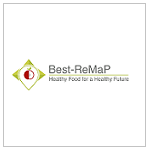Background
High intakes of salt, sugars, total and saturated fats have been linked with higher prevalence of various noncommunicable diseases. However, the actual range of intakes in adults across Europe for all these nutrients of concern is above the recommendations.
According to WHO, ‘reformulation policies for healthier food and beverage products’ is one of the NCD Best Buys to tackle unhealthy diets. To monitor the evolution/change, there needs to be a systematic collection of data across EU countries, and it needs to be available to the key stakeholders.
However, currently there is a ‘black box’: no systematic approach to collect and access data to allow a continuous monitoring of the food supply. Industry reports success stories, with no possibility to verify data independently.
FABLE aims to close this information gap by making data collected on branded food and beverages through EU-funded projects publicly available for researchers, policy makers and the public. Users will be able to interact with, explore and visualise data in an easy way. This will allow for the public monitoring of the food supply across the EU.
Policy context
Several factors led to the development of FABLE and they can be grouped under three main categories.
Monitoring of food reformulation has been:
- identified as key for success in food reformulation;
- prioritised as a best practice to be implemented through a Joint Action.
- EU-funded projects and Joint Actions using a harmonised methodology for data collection
- Data on food composition from >100000 labels collected across 23 European countries
- Products across 22 food and beverage categories, including bread products, delicatessen meats, soft drinks, breakfast cereals and dairy products
Data sources
At its launch in Q3 2023, FABLE will be hosting data on branded food and beverage products across 22 European countries collected through EUREMO and Best-ReMaP. Its design will allow the addition of data coming from future data collection efforts.
If you want to find out more about each οf the projects feeding into FABLE, click on the respective link below.


